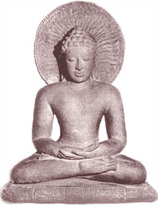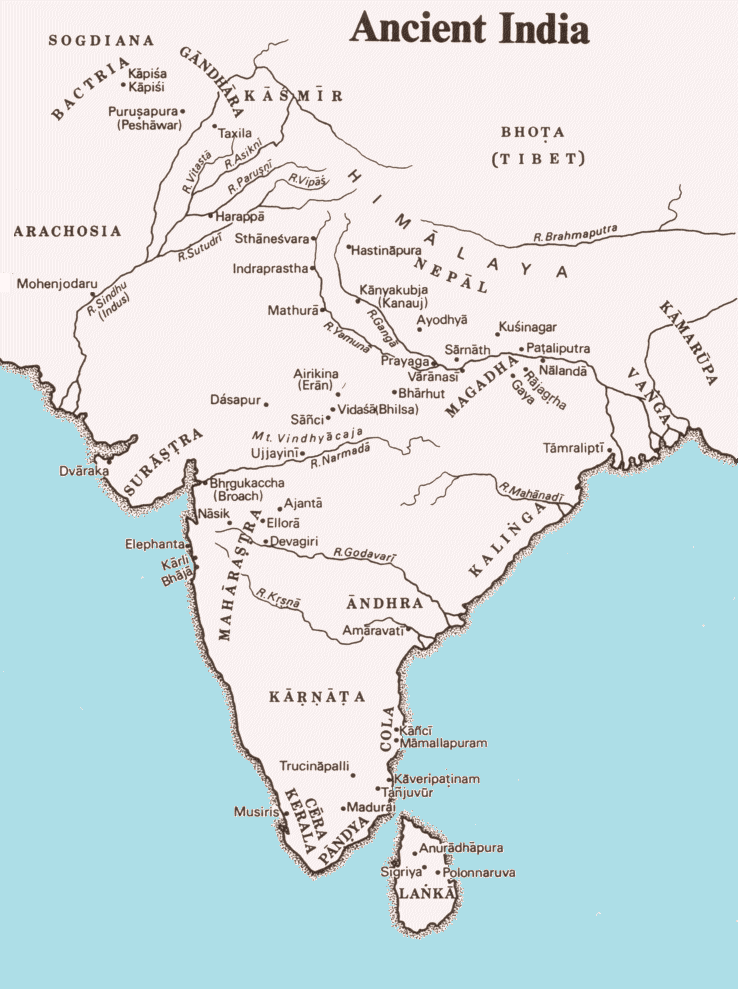
The short essay was published in the miscellany volume “Mahāvīra and His Teachings”, edited on the occasion of 2500th anniversary of Bhagavān Mahāvīra by A. N. Upadhye et al. (Bhagavān Mahāvīra 2500th Nirvāṇa Mahotsava Samiti, Bombay, pp. 195-198).
The Age of Mahāvīra
The one hundred years in approximate round numbers, 600 B.C. to 500 B.C., for many reasons was a brilliant epoch, not merely in our National History, but, in the whole Asian continent. The philosophic orient was torn by great movements of heart searching, political, economic and religious integration by ferment. In India, we have become habituated in dividing the dynamic process of thinking, called History, by well defined periods and personalities. We refer to Mauryan Age - when did it commence and when did it end? With Aśoka, Samudragupta, Maukharis, Harṣa, the Pālas and the Pratihāras we include archaeological materials which are "detritus of contemporaneous conditions" and which require to be more precisely interpreted. We have failed to define them as centuries with definite dates in terms of their characteristics as well as their failures and frustrations. In fact, yuga dharma. This century saw a tremendous transformations in philosophical speculations, social reforms, political ideologies in a remote corner of Bhāratavarṣa, which early Vedic intolerance labelled as 'No man's land'. It is this century, again, that witnessed Magadha, regarded as anārya deśaḥ, launching itself in that great career of imperialism as defined by Engels; which terminated, when in the neighbourhood of Ghosrāwān (ancient Yaśovarmapura of Gauḍavaho) Jivītagupta II was killed and defeated by Yasovarman of Kanauj. Arabia has its holy Prophet, Israel and Jordan (former Palestine) its Jesus, China its Confucius. But in very few countries, in well clarified centuries, so many religious reformers and so many luminaries distinguished themselves, by original speculations, within a course of centuries. All their dates, again can be fixed by two great leaders: Buddha and Mahāvīra.
That Mahāvīra and Buddha two kṣatriyas did become successful religious leaders, opened the way for further social reforms, not properly analysed in the social organizations that existed over the chaos that represented the decadent Vedic socio-religious conditions. If Kṣatriyas could preach religions then why not the Śudras wear the purple (that is become royalties)? And, this is what happened, in Magadha, when Nandas ascended the throne of Magadha. Prācya deśa (Eastern India) by all accounts had become vast crucible of race admixture and culture complex. The next logical step was taken by Lord Mahāvīra to bring about a more disciplined existence based upon ahiṁsā and self-attainment by self-dedication. He was not merely an aspirant to ultimate knowledge, but, taught the way to attain the same by the masses, by rules of behaviour for the secular householder or laity, but also by an emphasis on austere asceticism. The moribund materialism and useless gory sacrifices of Vedic ritual was not merely attacked, but its uselessness exposed. The Aryans being numerically inferior, prohibited asceticism in youth encouraging production of progeny for their preservation, but the asceticism preached by Mahāvīra struck at its very root because, he realized that a life of parigraha-parimāṇa, the dangers of 'desire', in a materialistic world, vrata, nirjarā belief in Karma-phala, which has totally disappeared from our population, leading to the present murderous conflicts, are the ways by which the society can be preserved. The inequalities amongst men which caused all the trouble and sense of frustration was preached not in the 19th century Europe but by Lord Mahāvīra in the centuries before the birth of Christ.
The ascetic ideal of Lord Mahāvīra was based upon the supreme knowledge, that while the five aṇuvratas were sufficient for the secular homes; long training, dedication to the cause of salvation, by the doctrine complete renunciation of all worldly things, was imperative and should not be resorted to only in old age (vānaprastha). To day we are living in a world of mad lust of power, greed, murder and massacre. But his supreme self did anticipate these conditions in a society which in our egotism we regarded as primitive and warned mankind about it; and not merely that, how to avoid its pitfalls. Jainism has given India, a long line of kings, patrons of art and literature. Buddhism had disappeared from the face of its native land but Jainism survived in the jungle tracts of Manbhum in remote rural areas of Burdwan (Deolia), in inhospitable Maru-deśa thriving as peaceful householders, as men of piety and honesty carrying their humble trades, as statesmen, financiers and defenders of faith. That it has been able to stand the strain and persecutions of more than a millennium is the greatest justification of the teachings of Lord Mahāvīra.

If we do not keep our researches on Jainology confined merely to learned tomes, but make its tenets well known to the masses, emphasising on self-analysis, causes of suffering and creed of aṇuvratas, the chasm that modern India is facing can be avoided. But its germ lay in the jungle covered terrain of Magadha, Sumha and Rāḍhā. Only it has to be resurrected. That is why the importance of the "Age of Mahāvīra".
The message of Mahāvīra was made possible not merely by the political revolution that was impending, but a revolution on ideological basis, magnitude of which has never been estimated. This period presented an inchoate religious conditions, giving birth to contradictory philosophical speculations, many of which could never have produced that Utopia of spiritualism which, was their objective. Our knowledge about them is chiefly derived from rival theologians. Even if we accept them cum grano sali, their existence can not be denied. First, were the Vedic materialism, the Lokāyatas, and the school of Ajita the Keṣa-kambalī. Then were the Parivrājakas and Sañjaya the Agnostic. The basic investigations being the human soul and its ultimate end. Then there were the Eighteen schools regarding primordial and ultimate beginning of things, the 'Eternalists' (Śāśvatavāda), the 'Extensionists' (Sānta-Anantavāda), the Eel wriglers, the fortuitous originists (Akāraṇavāda). Others were Purāṇa Kāṣyapa, Kātyāyana and finally Maṅkhali Gośalaputra, the leader of the Ājivikas. Then there were the dualists and monotheists amongst the followers of the Brahminical religion.
In these chaotic theological and religious conditions, two luminaries appeared in Magadha, one teaching extreme asceticism, and the other so-called majjhima patha. That they were received by a distracted people joyously is evident from the history of its (Jainism) survival throughout a period of genocide, persecution and conversion. It shows the depth of his teachings, which commenced, as the seals of Mohenjo-daro demonstrate in the millenniums, before the birth of Christ. [1] The Age of Mahāvīra was the epoch that sent India with her teeming millions, on the path to meet their destiny. Its importance in the history of Indian civilization and culture is undoubted.
 Adris Banerji
Adris Banerji